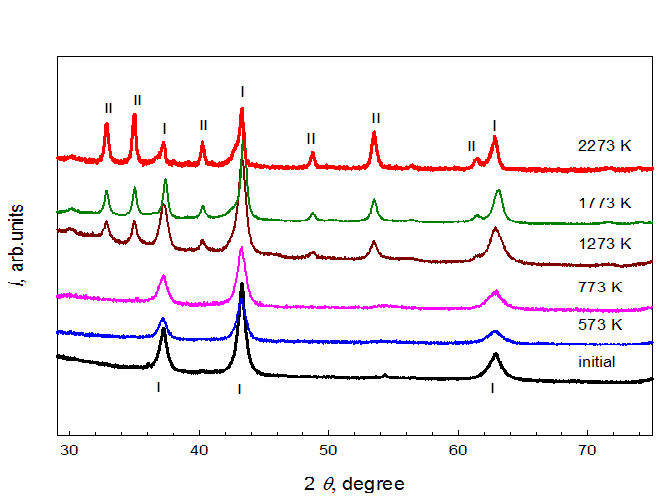NANOSYSTEMS: PHYSICS, CHEMISTRY, MATHEMATICS, 2018, 9 (4), P. 544–548
Effect of high pressures and high temperatures on the structure of nanostructured titanium monoxide
A. A. Valeeva – Institute of Solid State Chemistry UB RAS, 91, Pervomaiskaya st., Ekaterinburg, 620990; Ural Federal University named after the first President of Russia B. N. Eltsin, 91, Mira st., Ekaterinburg, 620002, Russia; anibla_v@mail.ru
M. G. Kostenko – Institute of Solid State Chemistry UB RAS, 91, Pervomaiskaya st., Ekaterinburg, 620990, Russia
A. Pfitzner – Institute of Inorganic Chemistry, Regensburg University, Regensburg, Germany
A. A. Rempel – Institute of Solid State Chemistry UB RAS, 91, Pervomaiskaya st., Ekaterinburg, 620990; Ural Federal University named after the first President of Russia B. N. Eltsin, 91, Mira st., Ekaterinburg, 620002, Russia
The structure of nanostructured titanium monoxide TiO0.98 containing structural vacancies in two sublattices simultaneously has been modified via thermobaric annealing. Analysis of the experimental data on thermobaric synthesis of nanostructured TiO0.98 with cubic B1 type structure at temperatures 573 – 2273 K and pressure 6 GPa revealed that a transition from the cubic B1 (sp. gr. Fm3m) phase to the trigonal Ti2O3 (sp. gr. R3c) phase takes place in the nanostructured monoxide as a result of high pressures and high temperatures. The first-principle calculations of the cohesive energy and electronic structure show that the trigonal phase with space group R3c is energetically favorable compared to the cubic phase of the same composition TiO3/2 and the orthorhombic ordered Ti2O3 (sp. gr. Immm) phase.
Keywords: nanostructured titanium monoxide, structural vacancy, nonstoichiometry, high pressure, high temperature, phase transition, electronic structure.
PACS 61.72.Dd, 61.72.Bb, 64.70.Nd, 71.20.Ps
DOI 10.17586/2220-8054-2018-9-4-544-548
